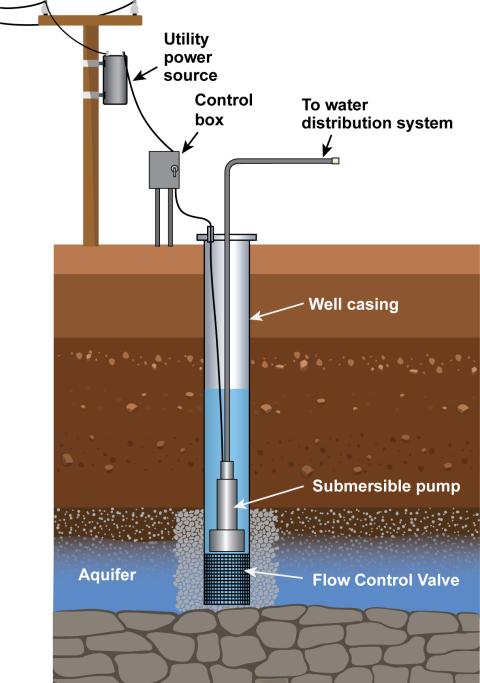Injection Well Hydropower Projects
Development and Permitting Considerations
Development

Before adding hydropower to an injection well, a feasibility study can be conducted to determine equipment requirements, identify potential barriers or fatal flaws, and evaluate the financial viability of a potential project. Costs and benefits will vary for each site based on local conditions: the type of injection well, head and flow rates, equipment choices, installation and labor costs, electrical grid access, and availability of financial incentives.
Federal Energy Regulatory Commission (FERC)
Most hydropower projects require permitting from FERC; however, many injection well projects may be eligible for the fastest, least complex permit, known as a Qualifying Conduit Hydropower Facility, which is categorically exempt from the National Environmental Policy Act.
Local Permits
State, county, or municipal land use, construction and electrical codes may require additional permits issued by a local government before construction or operation.
Interconnection
A three-phase connection to the utility grid will be required and all renewable energy projects that connect to the electric grid must work through an interconnection process with the local utility. Potential sites not already connected to the electrical grid may face a barrier in the cost of a line extension to connect to the local utility. Line extensions of more than a quarter mile may be financially challenging, though sites with more hydropower potential may be able to cost-effectively support longer distances than sites with less hydropower potential.
Power Sales
Projects often have two options to sell or get credit for the power they generate: Net Metering or power sales as a Qualifying Facility, though other options may be available in some areas.
- Net metering, where offered, is a billing arrangement where a renewable energy system offsets the electricity consumption at a site, often on a monthly or annual basis. Typically, the utility credits the system owner for any excess energy produced, which is sent back to the grid and can be used to offset future electricity bills.
- Energy can also be sold to the utility at “avoided cost” rates through a Qualifying Facility (QF) designation under the Public Utility Regulatory Policies Act (PURPA). Selling power as a QF requires a more complex contractual relationship with the utility, including the potential for penalties if contractual obligations are not met.
Operations
Adding hydropower to an injection well may add operations and maintenance costs like those experienced for operating and maintaining a pump. For sites where pumping already occurs, additional run time on the pump and/or variable frequency drive need to be considered from the perspective of operations, maintenance, total system life, and replacement or decommissioning.
Financial Incentives
Federal, state, local, and/or utility incentives, grants, tax credits, or loans may be available to reduce project installation costs or support projects moving through study and development processes and into construction. The specific offers and requirements often change over time. Up-to-date information can typically be found online at the Database of State Incentives for Renewables & Efficiency.
Learn about how to generate hydropower from injection wells in the pocket guide.